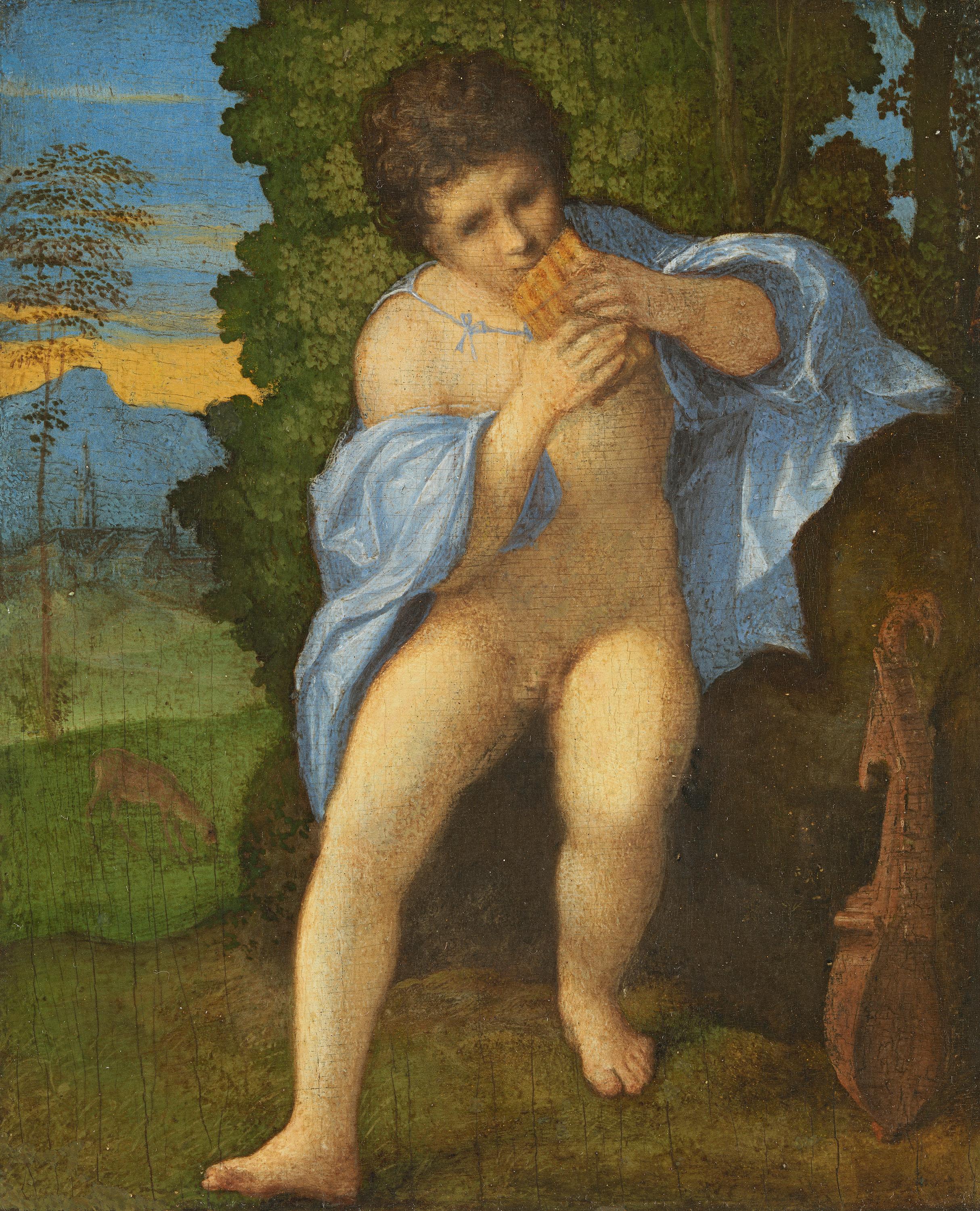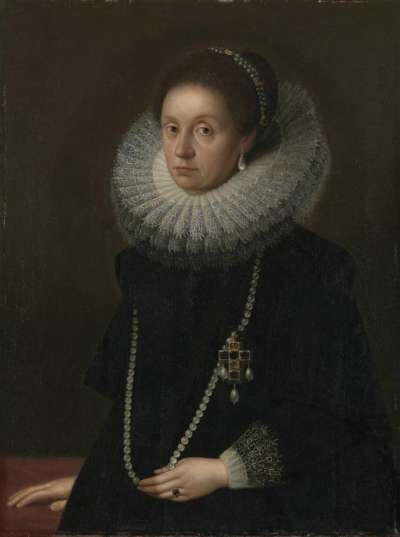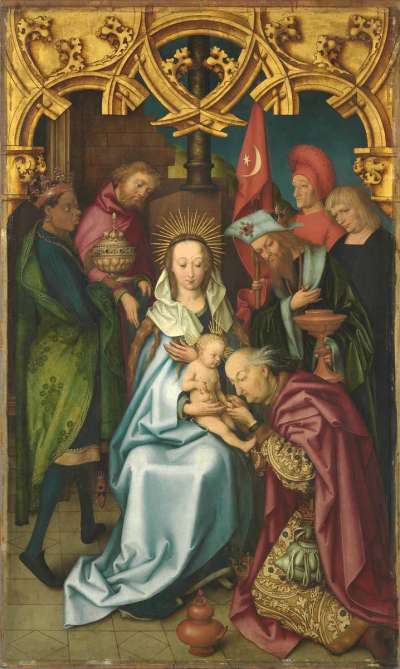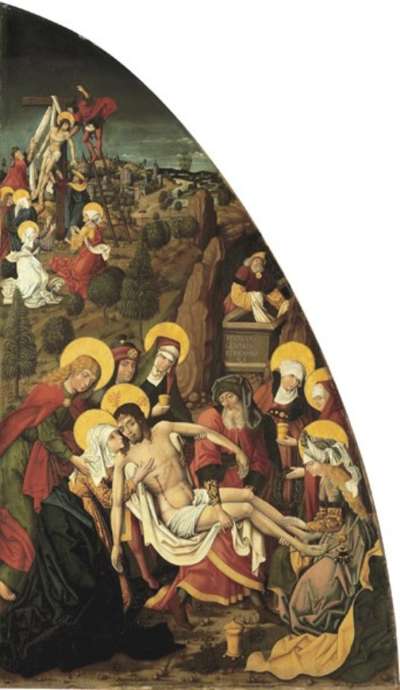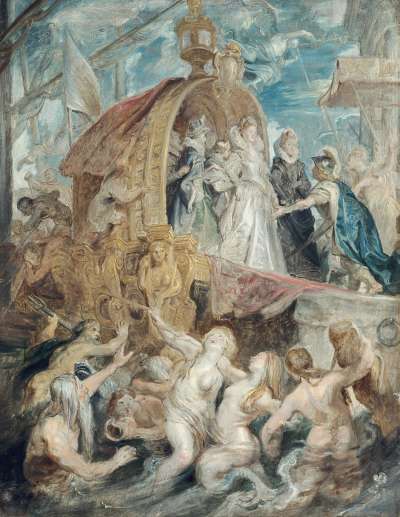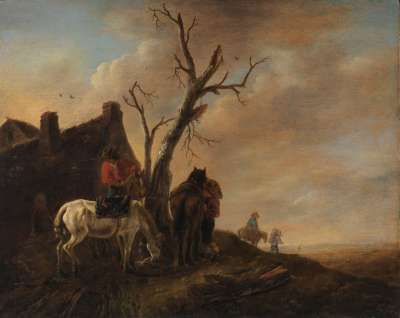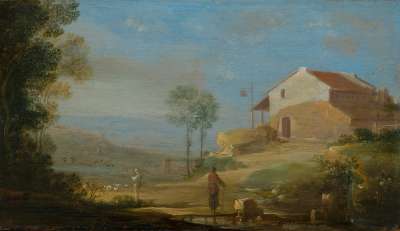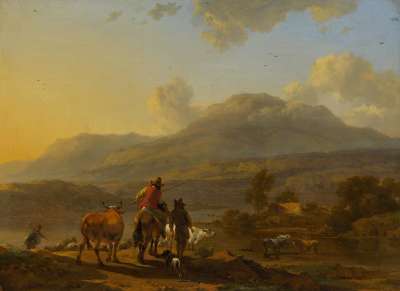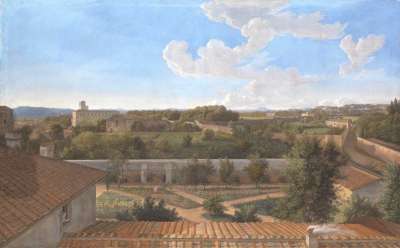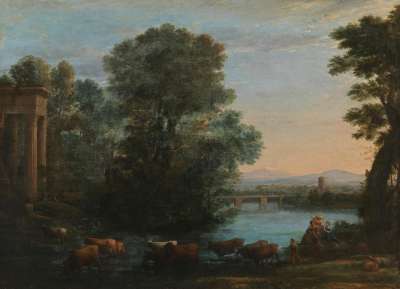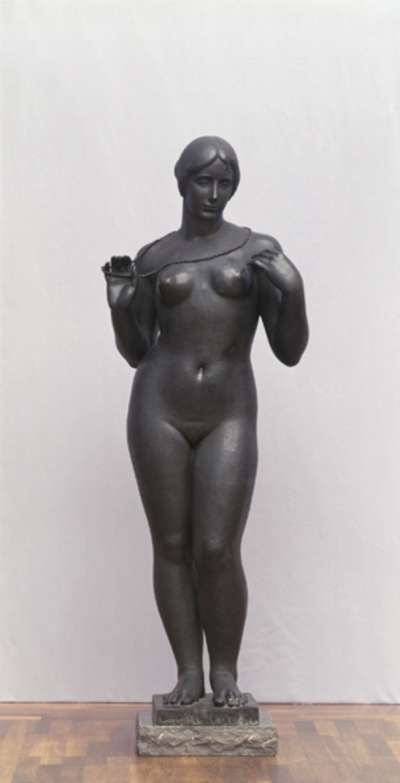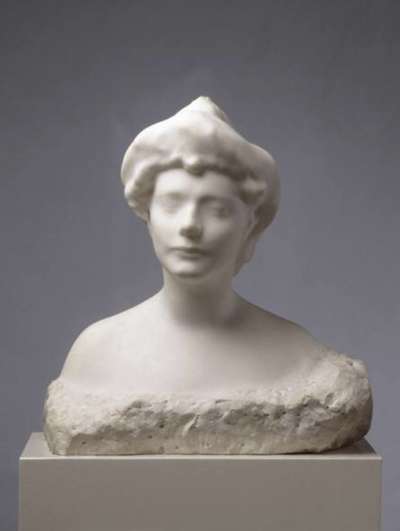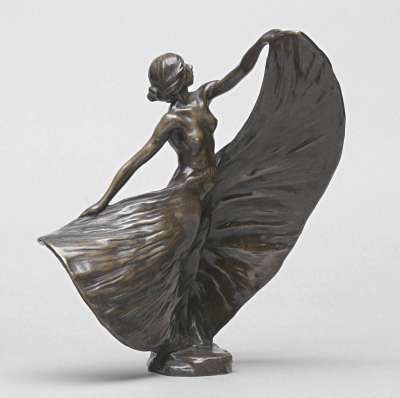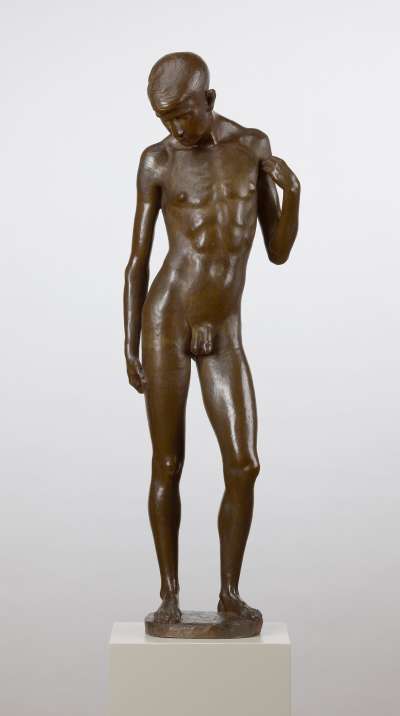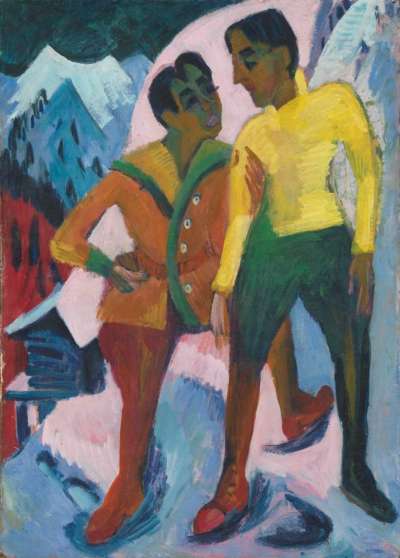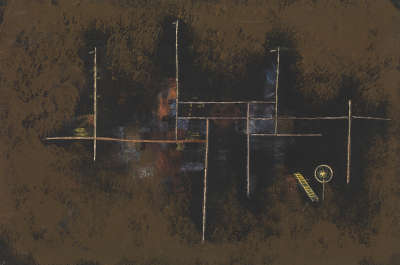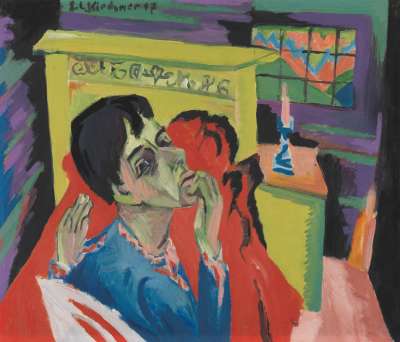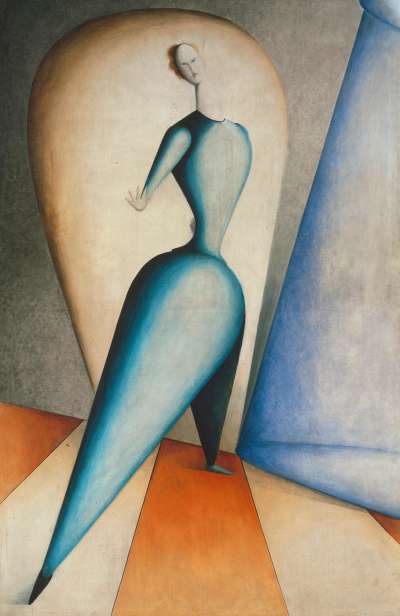Daphnis,
um 1513/15
Material / Technology / Carrier
Pappelholz
Dimensions of the object
19,6 x 16,4 cm
Displayed
Not on display
Acquisition
Aus der Kurfürstlichen Galerie München
Stock
Bayerische Staatsgemäldesammlungen - Alte Pinakothek München
Citation
Jacopo Negretti, gen. Palma il Vecchio(zugeschrieben), Daphnis, um 1513/15, Bayerische Staatsgemäldesammlungen - Alte Pinakothek München, URL: https://www.sammlung.pinakothek.de/en/artwork/7yxYbq6LYm (Last updated on 05.02.2024)
This small painting probably originally decorated a precious piece of furniture. Like many of his prominent colleagues, Jacopo Palma il Vecchio, to whom this work can be attributed, created exquisite furniture decorations for palazzi in addition to canvas and panel paintings. Typical of this genre is the mythological theme of the depiction, which shows the shepherd boy Daphnis. Educated Venetians were familiar with this figure from classical bucolic poetry by Theocritus and Virgil, which was popularised by the flourishing print culture in Venice around the beginning of the 16th century. In Palma’s painting, the fictional alternative world of Arcadia – an idyll populated by nymphs, satyrs, and shepherds like Daphnis – recalls the pre-Alpine landscape of the Venetian terraferma. The juxtaposition of different instruments alludes to the yearning that was cultivated in humanist circles of the time for an authentic, harmonic co-existence in natural surroundings: Daphnis plays the syrinx, a rustic variant of the pan flute; in contrast, the cister, a luxuriously decorated stringed instrument that was considered the epitome of courtly and elite sophistication, stands idly by.
